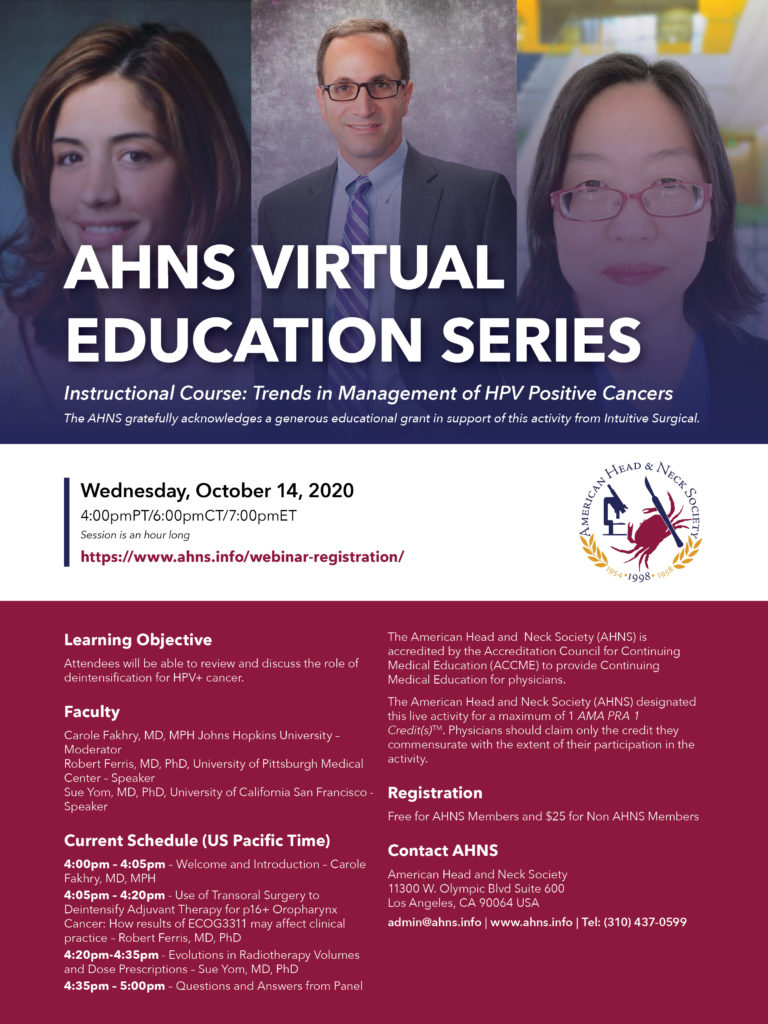AHNS Call For Abstracts
Submission Deadline:
December 4, 2020 – 5:00 PM PT
You are invited to submit abstracts to the AHNS 10th International Conference on Head and Neck Cancer: “Survivorship through Quality and Innovation” taking place on July 22-25, 2021 at the Hyatt Regency Chicago in Chicago, Illinois.
All abstracts, even if previously submitted and accepted will undergo the standard peer review process. Please submit new or previously submitted abstracts for the conference next summer, as long as it complies with the following paragraph.
- No Previously Published/Presented Submissions (Encore Abstracts):The abstract submitted must present original work that has not and will not be published or presented prior to the AHNS 10th International Conference on Head and Neck Cancer, and shall not be under review for publication prior to the AHNS 10th International Conference on Head and Neck Cancer except by permission from the AHNS Program Chair. The exception to this rule is that a manuscript may be submitted to JAMA Otolaryngology – Head & Neck Surgery for special meeting related consideration only after the abstract has been accepted by AHNS for presentation.
To submit your abstracts, please visit the following web page:
Submit Your Abstract Here Now
- NOTE: ALL content authors are required to disclose any financial relationship(s) with an ACCME-defined commercial interest (“industry”). AHNS considers the presenter of a proffered paper to be in control of the content. Thus, employees of commercial interests may not be the presenter for abstracts submitted to AHNS meetings.
If you have any questions, please contact the AHNS office at 310-437-0559 x 118 or by email at [email protected].
